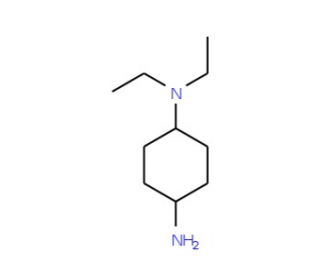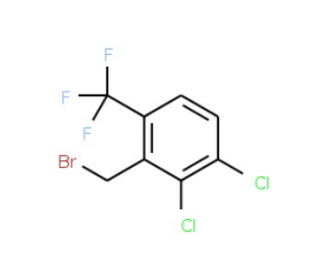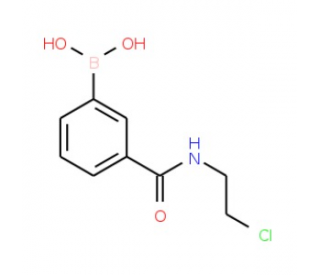详细说明
Species Reactivity
Human
Specificity
Detects human CD97 in direct ELISAs and Western blots. In direct ELISAs and Western blots, no cross‑reactivity with recombinant mouse CD97 is observed.
Source
Monoclonal Mouse IgG 2A Clone # 380903
Purification
Protein A or G purified from hybridoma culture supernatant
Immunogen
Mouse myeloma cell line NS0-derived recombinant human CD97
Gln21-Gln398
Accession # NP_001775.2Formulation
Supplied in a saline solution containing BSA and Sodium Azide.
Label
Allophycocyanin
Applications
Recommended
ConcentrationSample
Flow Cytometry
10 µL/10 6 cells
See below
Please Note: Optimal dilutions should be determined by each laboratory for each application. are available in the Technical Information section on our website.
Data Examples
Flow Cytometry | Detection of CD97 in Human Neutrophils by Flow Cytometry. Human neutrophils were stained with Mouse Anti-Human CD97 APC‑conjugated Monoclonal Antibody (Catalog # FAB2529A, filled histogram) or isotype control antibody (Catalog # , open histogram). View our protocol for . |
Preparation and Storage
Shipping
The product is shipped with polar packs. Upon receipt, store it immediately at the temperature recommended below.
Stability & Storage
Protect from light. Do not freeze.
12 months from date of receipt, 2 to 8 °C as supplied.
Background: CD97
CD97 is a 95‑100 kDa member of a protein group known as the LNB-TM7 protein family that evolved from genes of the secretin receptor superfamily (1‑3). Molecules in this family are unique hybrid structures consisting of EGF-like modules coupled to class B G-protein 7-transmembrane (TM) domains by a glycosylated (mucin) stalk. Human CD97 is synthesized as an 835 amino acid (aa) precursor that contains a 20 aa signal sequence, a 532 aa extracellular domain (ECD), a 238 aa “transmembrane” region that includes seven TM segments, and a 45 aa cytoplasmic tail (4). Within the 532 aa ECD, the first 236 aa contains five EGF-like domains, the C-terminal four of which bind calcium, and a juxtamembrane 296 aa RGD-containing mucin stalk (4, 5). The stalk is both glycosylated and proteolytically cleaved (at aa 530) to create a noncovalently linked 65‑70 kDa glycosylated extracellular alpha -subunit and a 28 kDa 7-TM membrane-bound beta -subunit (4). There are two known alternate splice forms in human. Isoform # 1 contains four EGF-like domains (domain # 1, 2, 3 and 5), while isoform # 2 contains three EGF-like domains (domain # 1, 2 and 5) (1, 4, 6). The ECD in isoform 1 is 60 kDa in size, while the ECD in isoform 2 is 55 kDa in size (native molecular weight). The five EGF-like domain region in human is 55% aa identical to that in mouse. Cells known to express CD97 include monocytes, macrophages, T cells, select B cells, dendritic cells and, potentially, vascular and visceral smooth muscle cells (1, 7). There are at least two ligands for CD97. One is chrondroitin sulfate that binds only to the full-length (five domain) form of CD97. Binding is dependent on the presence of EGF-like domain # 4 (3). The second ligand for CD97 is CD55, a GPI-linked cell surface molecule with short consensus repeats that regulates complement activation on cell surfaces (1, 5, 7). CD97 EGF-like domains # 1 and 2 bind CD55 while domain # 5 stabilizes the CD97 molecule. The shortest CD97 isoform shows the strongest binding to CD55 (7, 8).
References:
McKnight, A.J. and S. Gordon (1998) J. Leukoc. Biol. 63:271.
Stacey, M. et al. (2000) Trends Biochem. Sci. 25:284.
Stacey, M. et al. (2003) Blood 102:2916.
Gray, J.X. et al. (1996) J. Immunol. 157:5438.
Lin, H-H. et al. (2001) J. Biol. Chem. 276:24160.
Hamann, J. et al. (1995) J. Immunol. 155:1942.
Jaspars, L.H. et al. (2001) Tissue Antigens 57:325.
Hamann, J. et al. (1996) J. Exp. Med. 184:1185.
Entrez Gene IDs:
976 (Human); 26364 (Mouse)
Alternate Names:
CD97










 粤公网安备44196802000105号
粤公网安备44196802000105号